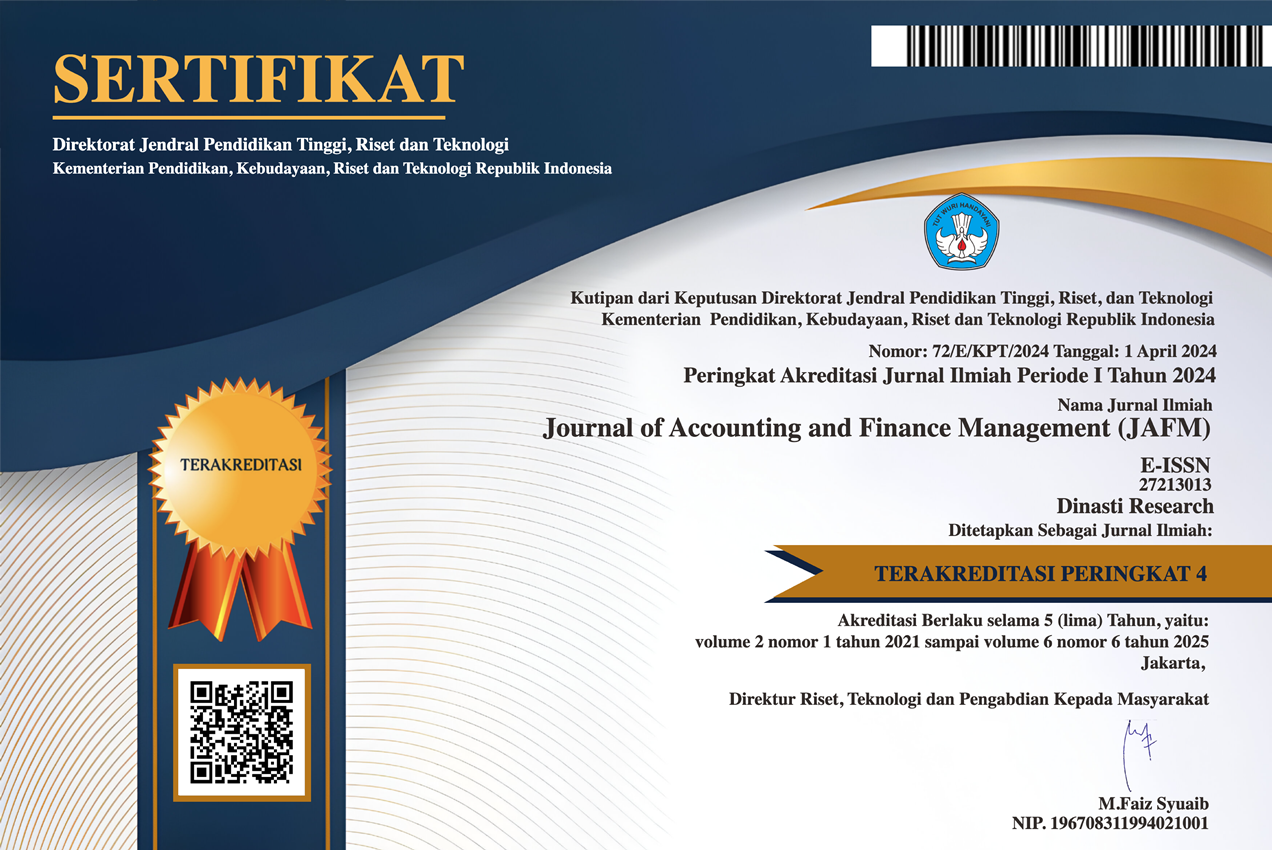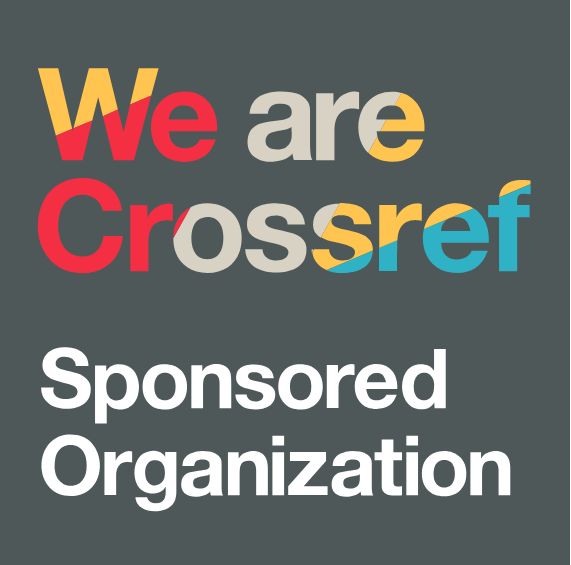Examining Green Transformational Leadership, Group Cohesiveness and Organizational Justice in Reducing Turnover Intention and Enhancing Sustainable Employee Performance
DOI:
https://doi.org/10.38035/jafm.v6i1.1579Keywords:
Green Transformational Leadership, Group Cohesiveness, Organizational Justice, Turnover Intention, Employee Sustainable PerformanceAbstract
This research investigates how green transformational leadership (GTL), group cohesiveness (GC), and organizational justice (OJ) affect employee sustainable performance (ESP), with turnover intention (TOI) acting as an intermediary. The study, conducted at PT Puyo Indonesia Kreasi, emphasizes the significance of sustainable leadership, teamwork, and fairness in boosting employee performance that aligns with environmental, social, and economic objectives. Utilizing Structural Equation Modeling (SEM), the results indicate notable positive correlations between green transformational leadership, group cohesiveness, organizational justice, and employee sustainable performance, while turnover intention negatively mediates these connections. The study emphasizes an integrated approach that combines eco-friendly leadership, cohesive teamwork, and justice driven policies to enhance ESP and minimize TOI. GTL fosters an environmentally conscious workplace by embedding sustainability values into corporate culture, inspiring employees toward sustainable behaviors. GC strengthens collaboration, trust, and shared commitment, creating a foundation for long-term performance. OJ enhances employee motivation and loyalty by ensuring fairness in decision-making and resource allocation. However, high TOI disrupts ESP by reducing engagement and workforce stability. The findings offer managerial insights, advocating for sustainability focused leadership programs, structured team building, and fairness audits. Future research should explore these relationships across diverse contexts using longitudinal methods to capture dynamic changes in sustainable performance.
References
Ahmed, W., Umrani, W. A., Pahi, M. H., & Ahmed, S. (2021). Green Transformational Leadership And Employee Green Behavior: A Meta-analysis. Corporate Social Responsibility and Environmental Management, 28(4), 1041–1056. DOI: https://doi.org/10.1002/csr.2131
Chuang, S.P., Chen, P.Y., & Lin, Y.L. (2022). The Impact of Green Transformational Leadership, Green HRM, Green Innovation, And Green Culture On Sustainable Business Performance. Economic Research-Ekonomska Istraživanja, 35(1), 5760–5775. DOI: https://doi.org/10.1080/1331677X.2022.2047086.
Colquitt, J. A., Conlon, D. E., Wesson, M. J., Porter, C. O., & Ng, K. Y. (2001). Justice At The Millennium: A Meta-Analytic Review Of 25 Years of Organizational Justice Research. Journal of Applied Psychology, 86(3), 425–445. DOI : https://doi.org/10.1037/0021-9010.86.3.425
Dewantoro. (2022). Organizational Justice: A Literature Review. International Journal of Science and Management Studies (IJSMS), 5(2), 66-73. DOI: http://dx.doi.org/10.51386/25815946/ijsms-v5i2p108
Ding, H., Su, W., & Hahn, J. (2023). How Green transformational leadership Affects Employee Individual Green Performance A Multilevel Moderated Mediation Model. Behavioral Sciences, 13(11), 1-22. DOI: https://doi.org/10.3390/bs13110887
Farooq, H., Janjua, U. I., Madni, M., & Waheed, A. (2022). Identification and analysis of factors influencing turnover intention of Pakistan IT professionals: An empirical study. IEEE Access, 10(4), 1-23. DOI: https://doi.org/10.1109/ACCESS.2022.3181753
Forsyth, D. R. (2010). Group Dinamic (Edision Fifth). Belmont : Wadsworth Cengage Learning.
Ghozali, Imam & Latan, Hengky. (2017). Partial Least Square: Konsep, Metode, dan Aplikasi menggunakan program WarpPLS 5.0, Edisi ke-3. Semarang: Badan Penerbit Universitas Diponogoro.
Hamid, M., & Ul Hosna, A. (2021). Employee’s Sustainable Performance Process: Developing a Model For Sustaining Employees Performance by Managing Age Diversity. International Journal of Entrepreneurial Research, 4(2), 42-47. DOI: https://doi.org/10.31580/ijer.v4i2.2071
Hom, P. W., Lee, T. W., Shaw, J. D., & Hausknecht, J. P. (2017). One Hundred Years Of Employee Turnover Theory And Research. Journal of Applied Psychology, 102(3), 530–545. DOI: https://doi.org/10.1037/apl0000103
Ispiryan, A., Pakeltiene, R., Ispiryan, O., & Giedraitis, A. (2024). Fostering Organizational Sustainability Through Employee Collaboration: An Integrative Approach to Environmental, Social, and Economic Dimensions. Encyclopedia, 4(4), 1806-1826. DOI: https://doi.org/10.3390/encyclopedia4040119
Ji, T. (2021). Employee sustainable performance (E-SuPer): Theoretical Conceptualization, Scale Development, and Psychometric Properties. International Journal of Environmental Research and Public Health, 18(19), 1-18. DOI: https://doi.org/10.3390/ijerph181910497
Kim, Y., Lee, S., & Lee, H. (2021). Green transformational leadership And Environmental Performance In Small And Medium Enterprises. Environmental Science and Pollution Research, 28(1), 1–12. DOI: https://doi.org/10.1007/s11356-020-10556-0
Laura, N. (2021). Pengaruh Keadilan Organisasi Dan Employer Branding Terhadap Turnover intention Dengan Employee Engagement Sebagai Variabel Mediasi. Media Studi Ekonomi, 16(1), 1-14. DOI: https://journal.uta45jakarta.ac.id/index.php/MSE
Lee, S., & Kim, Y. (2020). Green transformational leadership and Employee Organizational Citizenship Behavior For The Environment: The Mediating Role Of Green Organizational Climate. Frontiers in Psychology, 13, 1-13. DOI: https://doi.org/10.3389/fpsyg.2022.1097655
Li, L., Zhu, B., Che, X., Sun, H., & Tan, M. (2021). Examining Impact of Green transformational leadership and Environmental Regulation Through Emission Reduction Policy On Energy-Intensive Industry’s Employee Turnover intention in China. Journal Sustainability, 13(12), 1-21. DOI: https://doi.org/10.3390/su13126530
Mathieu, J. E., Kukenberger, M. R., D'Innocenzo, L., & Reilly, G. (2015). Modeling Reciprocal Team Cohesion–Performance Relationships, As Impacted by Shared Leadership And Members Competence. Journal of Applied Psychology, 100(3), 713–734. DOI: https://doi.org/10.1037/a0038898
Park, S., Lee, S., & Lee, H. (2017). Group cohesiveness on Performance: Mediating Impact Of Collective Organizational Citizenship Behavior. European Journal of Management and Business Economics, 26(3), 122–130. DOI: https://doi.org/10.1108/EJMBE-03-2017-003
Prayogi, B. Yusrizal. (2023). The Influence of Group cohesiveness, Personality Job Fit, andwork stress on Turnover intention (Bank Sumut Syariah KCP Simpang Kayu Besar Tanjung Morawa. International Journal of Economics, Business and Accounting Research (IJEBAR), 7(4), 1-10.
Rio Syukron Jamal, Sandy Firdaus , Yusuf Bakhtiar & Vicky F Sanjaya (2022). Pengaruh Komitmen dan Turnover intention Terhadap Kinerja Karyawan (Study Kasus Perusahaan Yang Berada Di Lampung). Srikandi: Journal of Islamic Economic and Banking, 1(1), 38–44. DOI: https://doi.org/10.25217/srikandiv1i1.1335
Robertson, J. L., & Barling, J. (2017). Toward a new measure of organizational environmental citizenship behavior. Journal of Business Research, 75, 57–66. DOI: https://doi.org/10.1016/j.jbusres.2017.02.010
Saleem, F., Mateou, S., & Malik, M. I. (2024). How Green Transformational Leaders Trigger Environmental Performance? Unleashing the Missing Links Through Green Self-Efficacy, Green Empowerment, and Green Training of Employees. Sustainability, 16(22), 1-21. DOI: https://doi.org/10.3390/su16229982
Weber, P., & Kassab, E. A. (2024). The Employee green behavior of Green transformational leadership, green human resource management on the Sustainable Performance. Journal of Industrial Engineering and Management Development, 8(8), 1-21. DOI : https://doi.org/10.24294/jipd.v8i8.4630
Downloads
Published
How to Cite
Issue
Section
License
Copyright (c) 2025 Lisa Septiani, Anik Herminingsih

This work is licensed under a Creative Commons Attribution 4.0 International License.
Authors who publish their manuscripts in this journal agree to the following conditions:
- The copyright on each article belongs to the author(s).
- The author acknowledges that the Journal of Accounting and Finance Management (JAFM) has the right to be the first to publish with a Creative Commons Attribution 4.0 International license (Attribution 4.0 International (CC BY 4.0).
- Authors can submit articles separately, arrange for the non-exclusive distribution of manuscripts that have been published in this journal into other versions (e.g., sent to the author's institutional repository, publication into books, etc.), by acknowledging that the manuscript has been published for the first time in the Journal of Accounting and Finance Management (JAFM).



























